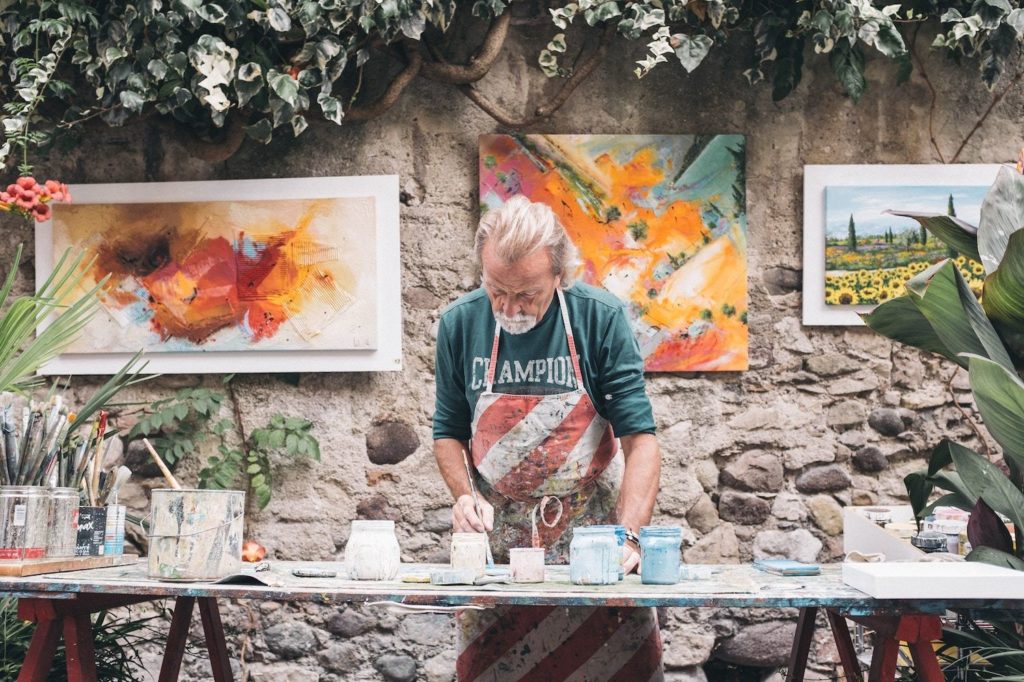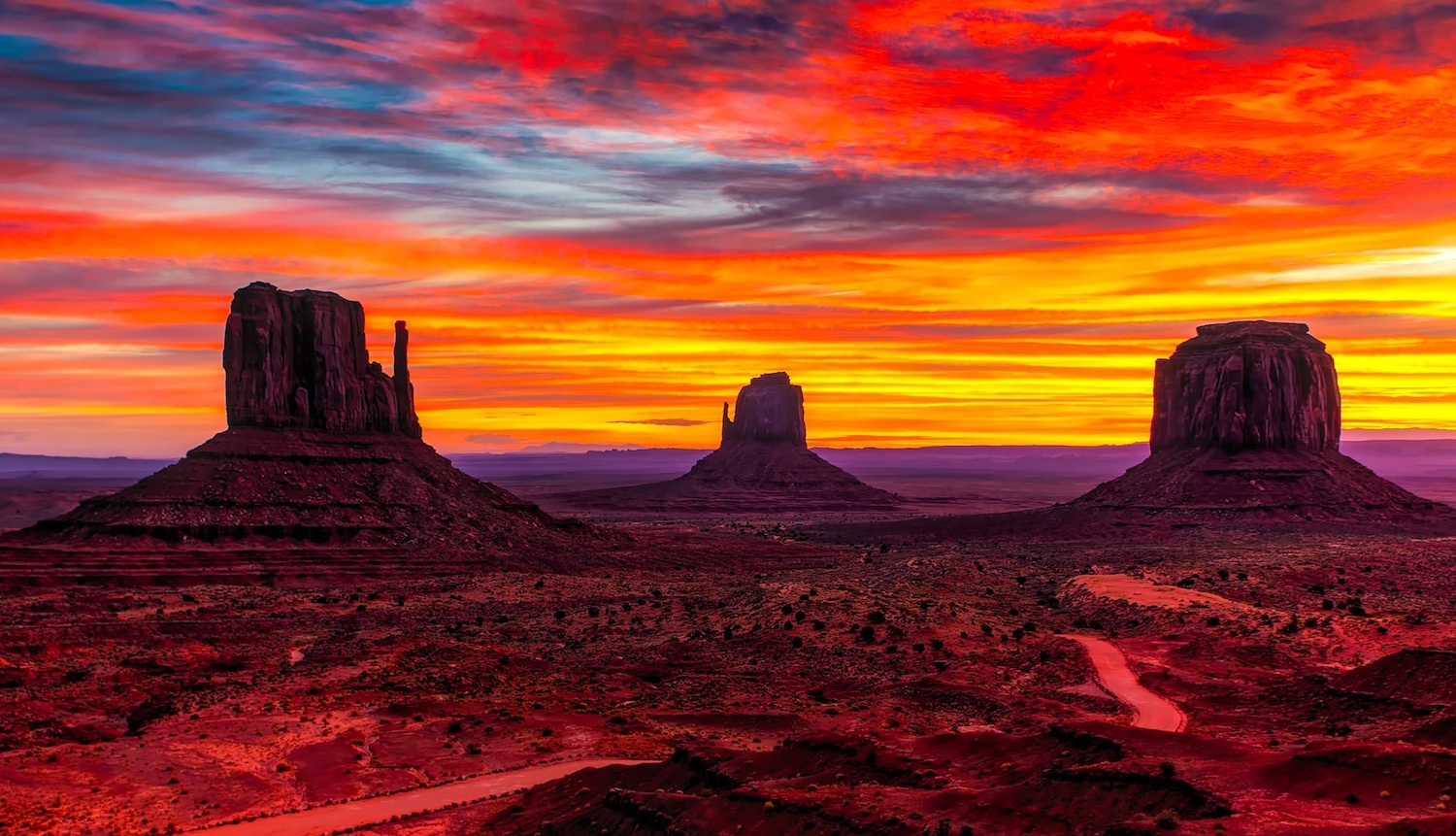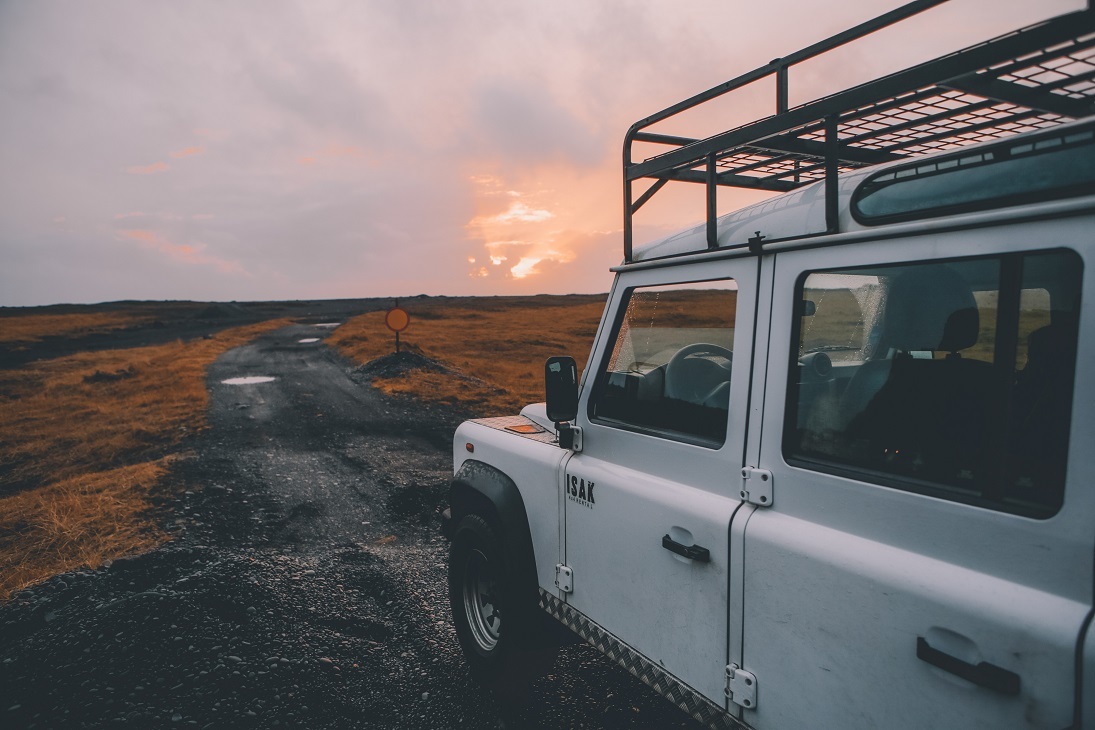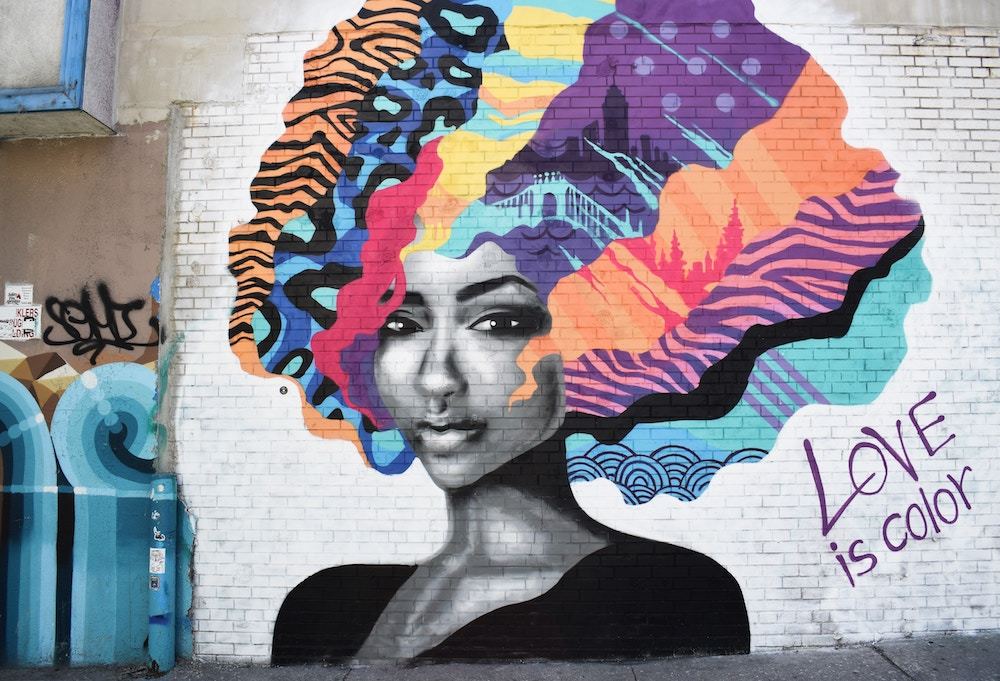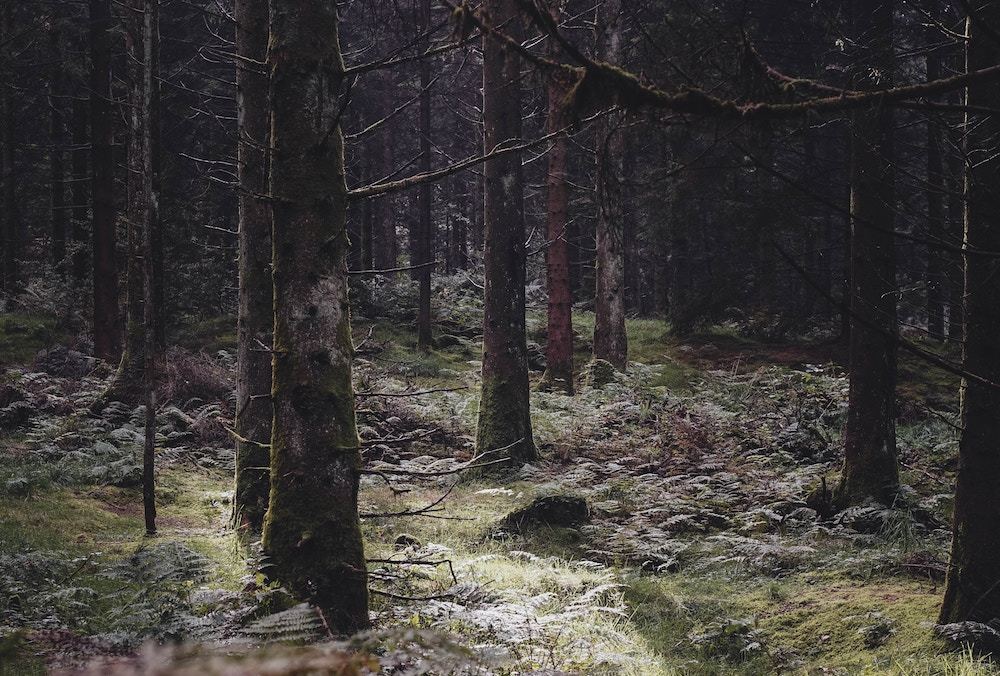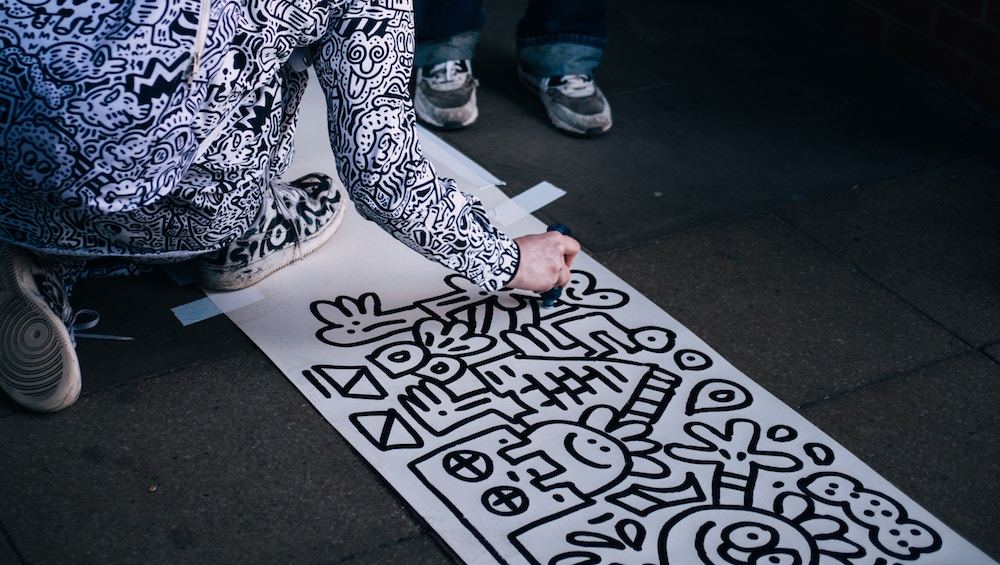Creative Thinking
What Is Creativity? Embracing Different Kinds of Creativity from a Global Perspective
By Liz Alton on March 20, 2018
What is creativity?
It's a question content creators must continually ask. For a writer and content strategist like me, the answers range from coming up with innovative ideas to crafting a beautiful turn of phrase to seeing how images and words can work together to support a marketing vision. Yet in the wider scope of our lives, it's important to recognize that there are different types of creativity, and looking through this lens can widen your whole perspective.
I recently found myself taking a grueling hike through a remote part of northern Arizona. Much of my personal time away from work these days is spent training in my ancestral spiritual traditions. As part of that work, I often travel to learn from the perspectives of other teachers. The destination of the hike in question was a medicine wheel located high in the mountains, where I had the chance to discuss native perspectives on symbolism with a local tribal teacher I work with each year. As I looked out over a vast valley and took in a breathtaking sunset, we talked about the ideas of constraints and freedom.
While the concept of the wheel varies from group to group, one angle stood out to me in that moment: Different directions, the associated aspects (think traits, animals, or natural phenomena), and stages of life all represent a kind of constraint or opportunity to explore a situation in a particular way. When you bring an idea or problem to the wheel and look at it through different lenses-new beginnings or how to build more stability, for example-you begin to look at the problem in a new way. It's like holding a faceted diamond up to the sun and being invited to explore a new dimension of the stone.
My whole paradigm of creativity is based on freedom: wide open spaces, lots of time in my schedule, and plenty of room to play with my wildest ideas. This discussion-and the idea that the concept of various lenses might somehow apply to my work-really got me thinking. Looking at an issue through different constraints can reveal unexpected insights and invite our minds to play in ways we never previously considered. Can taking a wider viewpoint open us up to new definitions and types of creativity?
Image attribution: Tim Trad
Diverse Perspectives and Creativity
It's long been discussed in the business world that diversity improves creativity. A range of different experiences, backgrounds, and viewpoints helps your company see and react to an array of interesting possibilities. The intersection of multiple cultures may, in fact, yield even more creativity; one study conducted by INSEAD found that multicultural team members could increase creativity by helping bridge perspectives from multiple cultures or points of view.
Before I became a full-time writer, I had the opportunity to work with entrepreneurs and brands around the globe. Often, my economic development work involved giving grants or strategy advice to people who had created amazing products or ideas in the midst of very challenging circumstances. One man harnessed the wind based on information he found in a book; others created a global business by partnering with a luxe brand department store to sell locally handcrafted baskets that are so complex and colorful that they're more art than practical pieces. There were the Macedonian animators who competed with Hollywood's shops for deals on new films and the startup in Kenya that sourced programming work to companies in Silicon Valley. Artisanal farmers in Jamaica grew some of the spiciest peppers on the Scoville scale and blended them into wild combinations of sauces and salsas that were both tasty and visually stunning.
The one thing that holds true across the world is that creativity flourishes. People's unique perspectives and life experiences help them see opportunities, develop business models, and bring their voices to the world in a way no one else can replicate. Can we broaden our own creativity and perspective by learning to look at the world in a different way? Can we create something better and more interesting by asking better questions-or different questions-than the ones that naturally occur to us from our limited points of view? (This seems like a good time to state the obvious, but important, caveat that we're talking about learning from other cultures and not appropriating them.)
Image attribution: Chris Barbalis
Asking Better Questions: A Culturally Inspired Approach
Can You Look At Your Space Differently?
National Geographic recently published a fascinating piece exploring the idea that getting out into nature makes us happier, healthier, and more creative. Forest bathing, which has been endorsed by the Japanese government, was one idea that jumped out at me. Think about your most recent adventure into the forest. Did you soak up the vibes, seeking to be renewed? Or was it a grim break from work to walk your dog and get back to your computer as quickly as possible? Think about where you do your work, where you do your thinking, and where you spend your creative time. Playing with your concepts of space and how you relate to it could open new doors.
Image attribution: Dave Reed
Can You Improve Your Creativity by Shifting Your Audience?
Today's creativity often has a commercial bent. We're artists or writers or data wizards, but we're selling our work-which means it needs to be on point and useful. Part of this involves understanding our audience, leveraging customer personas, and personalizing each piece to a specific potential customer, partner, or employee. Could you expand your creative horizons by shifting your audience?
In a brilliant piece he wrote for Quartz, Muhammad Yunus notes, "If you work for a conventional business, you won't choose to design a smartphone for the poor until you've exhausted the markets in the upper layers of income. And when you do, you'll simply make a cheaper version of your existing product rather than designing a phone specifically to meet the needs of the poor-one that would not only be cheaper, but also simpler, upgradable, exchangeable for the next model, extremely durable, and more efficient in addressing poor people's needs." You might surprise yourself with creative ideas if you asked how to bring new services or ideas to a different population, as Bangladeshi social entrepreneur Yunus did when he created Grameen Bank and, in turn, launched the microlending trend.
Could You Change Your Relationship with Rest?
A drained battery can't power a revolution, and a tired creative can't develop winning content. However, we tend to have a fairly static relationship with rest-get more sleep, spend time in front of the television, and disconnect. Sleep anthropology tells us there's a whole lot more we can do as well: Explore different sleep patterns such as biphasic or polyphasic sleep, or dive into nap culture. Eastern traditions encourage us to embrace mindfulness. Denmark offers a completely different approach with hygge, which encourages you to get cozy with a book, a knitted sweater, and your closest family and friends to recharge. Explore what you need to refill your creative well and recharge your energy, and consider whether different approaches could be a good fit with your unique rhythms and styles.
Could Necessity Bring the Muse?
In my economic development work, I saw how true the axiom "necessity is the mother of invention" really is. Culturally, we see a high degree of creativity coming from remote places like Iceland, which has more books per capita than any other nation. As one author writes, "For an isolated culture in the North Atlantic, creativity is important. Since the 9th century, when Iceland was settled, writing and music have been an integral part of life in the country. This remains true to this day, as the creative industries in Iceland employ more than 5% of the work force-a larger share than the fishing industry and agriculture combined-and generates a larger share of the GDP than agriculture." When ideas to spark creativity can be only a Google search away, would your ideas ring sharper if you disconnected? Would your designs feel richer and more alive if you put away the design software and brought out pen and paper? It's not about changing the way you work all the time. But exploring different ways to work-and, perhaps, ways that are less convenient or efficient than those we're used to-could bring new depth and perspective to your creativity and inventions.
Image attribution: Clem Onojeghuo
Experiment with Creativity
Could you devise your own creative and cultural experiments? Consider widening your own creative horizons by thinking about different ways to explore creativity.
Explore a Culture's Views on Creativity
Pick a culture and consume its art, poetry, video games, and other formats. What can you learn? How can you be inspired?
Find Diverse Partners
Harvard Business Review suggests that diversity increases creativity the most at the idea-generation phase; focus on building "deep diversity" in who you talk to at this critical project juncture. Ask questions and explore your ideas.
Explore Innovation at the Nexus of Two Cultures
Interesting things always happen at the intersection of different streams of thought, culture, and other merge points. Find intersections in your work or between your cultural experiences that broaden your perspective.
Find Wider Examples of Creativity
I used to think creativity was songwriting or beautiful art or modern dance. Today, I realize that any level of human expression and any medium can be a conduit for creativity-and looking at other cultures is often a great place to find it.
Back to the mountain top on that February day in northern Arizona, ringed by a circle of stones. That day, an implicit bias I had about creativity was made explicit and I was able to reshape my thinking. Often, different cultural perspectives inspire us, spark our thinking, and help us be more creative by accident. We meet someone amazing, travel somewhere, or read something inspiring. But don't wait for the muse to show up. Explore how different cultural perspectives can help you be more creative and create unforgettable contributions to the wider world.
For more stories like this, subscribe to the Content Standard newsletter.
Featured image attribution: Eddy Klaus
